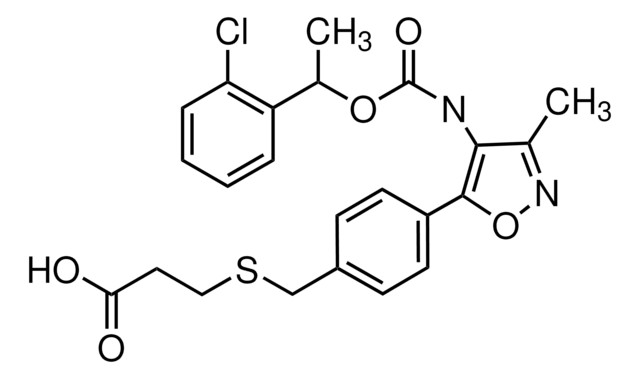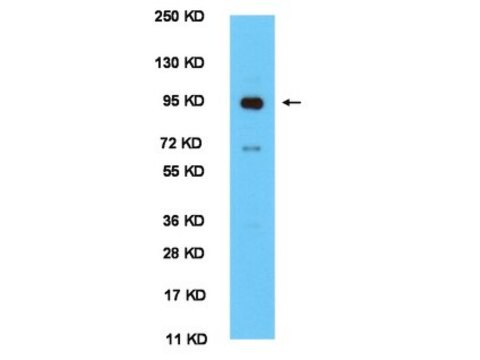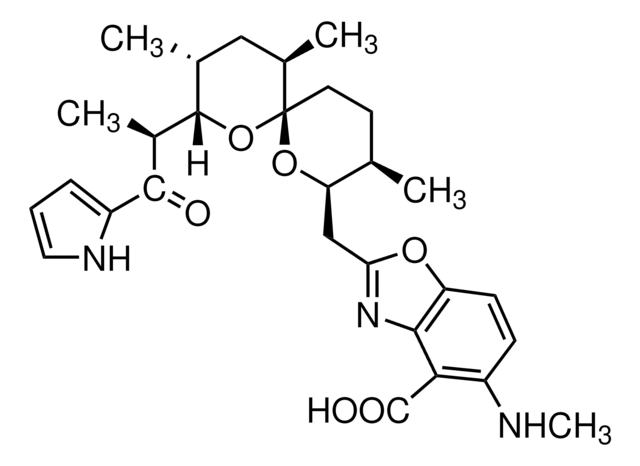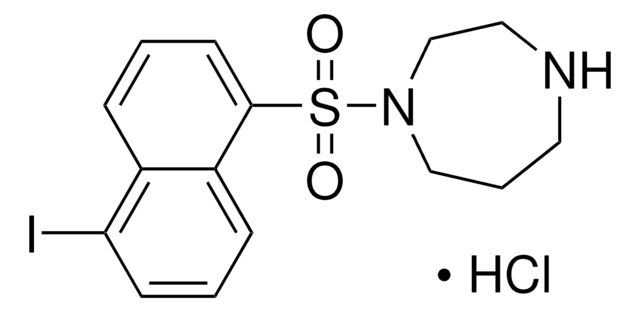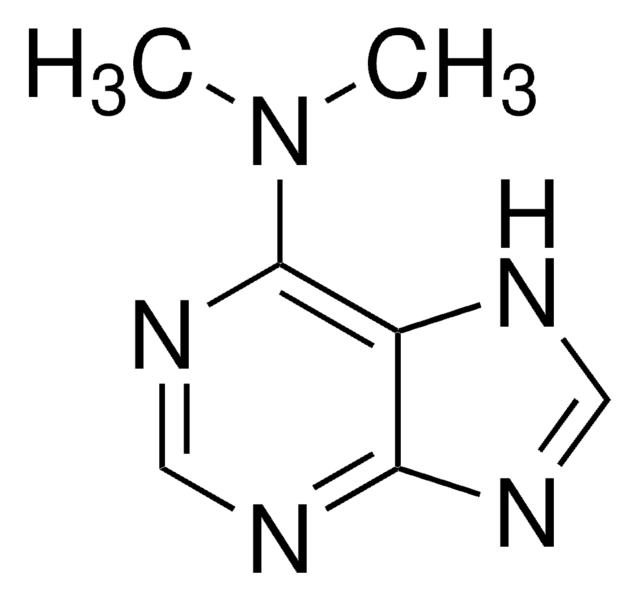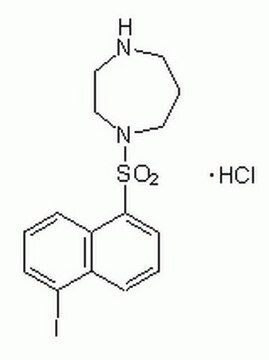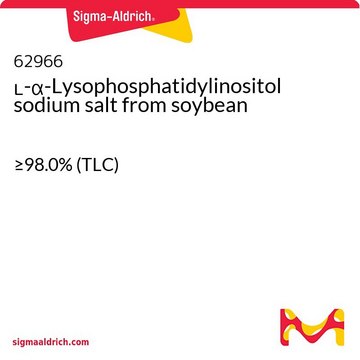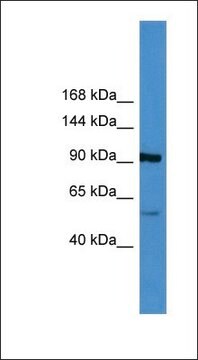L7260
Oleoyl-L-α-lysophosphatidic acid sodium salt
≥98%, solid
Synonym(s):
1-Oleoyl-sn-glycerol 3-phosphate sodium salt, 3-sn-Lysophosphatidic acid, 1-oleoyl sodium salt, LPA sodium salt
About This Item
Recommended Products
Quality Level
Assay
≥98%
form
solid
color
white
lipid type
phosphoglycerides
storage temp.
−20°C
SMILES string
O[C@](COP([O-])(O)=O)([H])COC(CCCCCCC/C=C\CCCCCCCC)=O.[Na+]
InChI
1S/C21H41O7P.Na.H/c1-2-3-4-5-6-7-8-9-10-11-12-13-14-15-16-17-21(23)27-18-20(22)19-28-29(24,25)26;;/h9-10,20,22H,2-8,11-19H2,1H3,(H2,24,25,26);;/b10-9+;;
InChI key
CHJOEWDRTPWOCY-TTWKNDKESA-N
Looking for similar products? Visit Product Comparison Guide
General description
Application
- for the activation of Ras homolog gene family, member A (RhoA) and expression of claudin-1 in human breast cancer epithelial cell line
- in RH7777 cells for cyclic adenosine monophosphate (cAMP) accumulation assay and calcium mobilisation assay
- in vitro luciferase assay and live-cell imaging
Biochem/physiol Actions
Features and Benefits
Caution
Preparation Note
Storage Class Code
11 - Combustible Solids
WGK
WGK 3
Flash Point(F)
Not applicable
Flash Point(C)
Not applicable
Personal Protective Equipment
Regulatory Listings
Regulatory Listings are mainly provided for chemical products. Only limited information can be provided here for non-chemical products. No entry means none of the components are listed. It is the user’s obligation to ensure the safe and legal use of the product.
JAN Code
L7260PROC:
L7260-5MG:
L7260-VAR:
L7260-BULK:
L7260-1MG:
L7260-25MG:
L7260-PH:
Certificates of Analysis (COA)
Search for Certificates of Analysis (COA) by entering the products Lot/Batch Number. Lot and Batch Numbers can be found on a product’s label following the words ‘Lot’ or ‘Batch’.
Already Own This Product?
Find documentation for the products that you have recently purchased in the Document Library.
Customers Also Viewed
Our team of scientists has experience in all areas of research including Life Science, Material Science, Chemical Synthesis, Chromatography, Analytical and many others.
Contact Technical Service